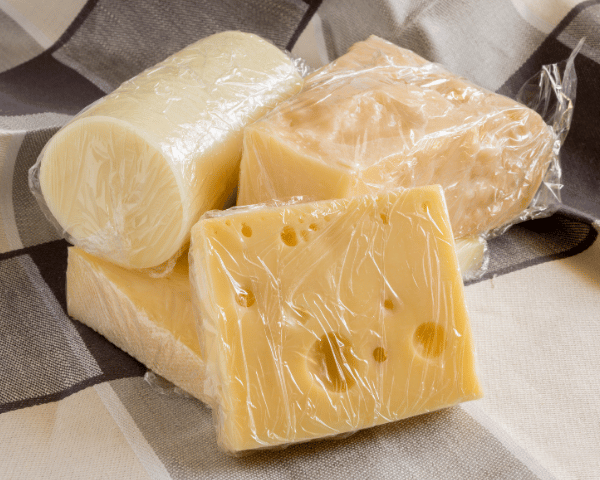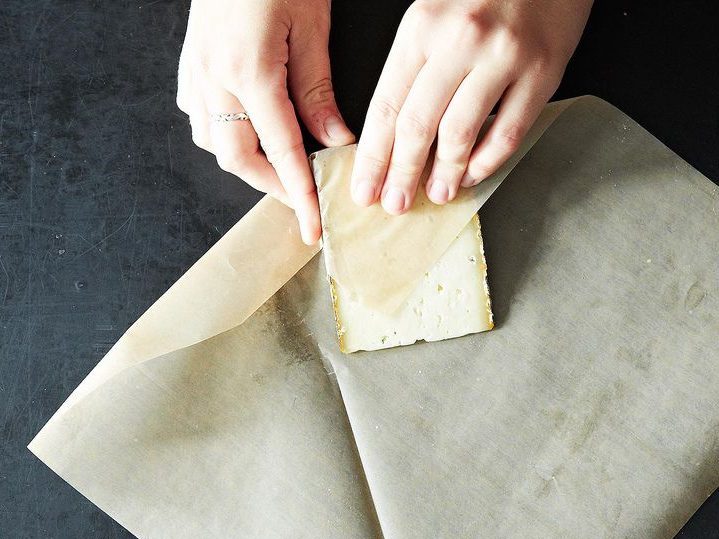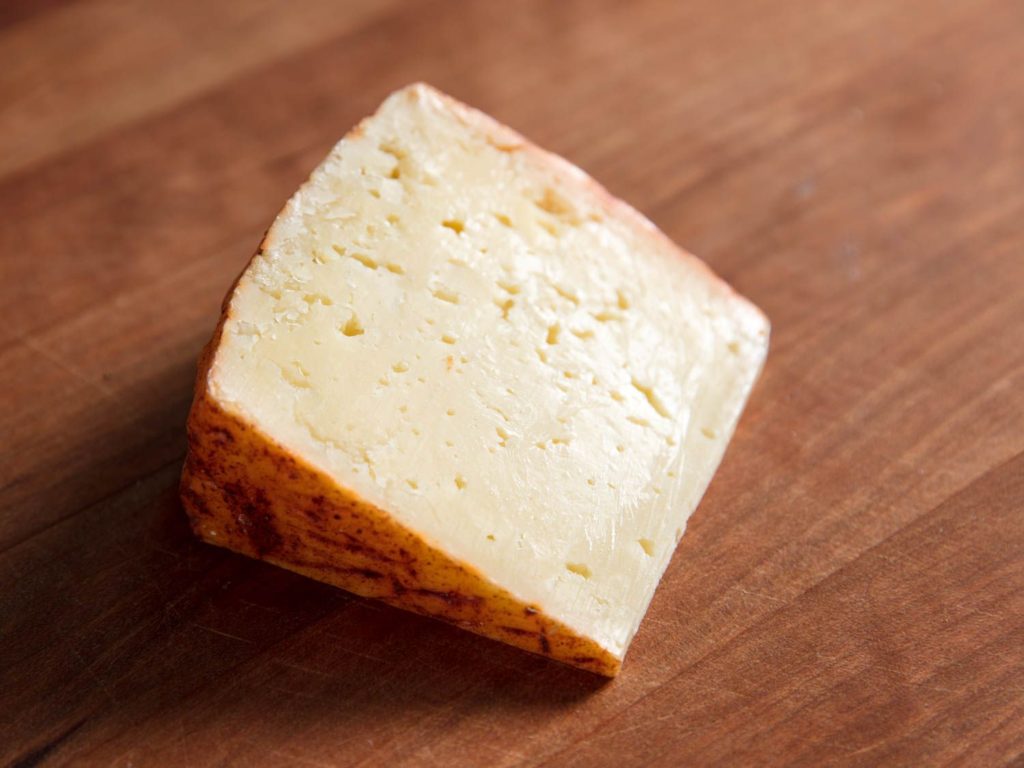You’ve been patiently waiting for this moment. You brought home a beautiful piece of Gruyère and it’s been in the fridge for two days. You know your cheese commandments and will allow it to get to room temperature before serving. Shock horror! After 30 minutes, it’s covered in droplets of moisture. Read on to find out why your cheese is sweating at room temperature.

SEE ALSO: The Cheese Wanker’s 10 Commandments of Cheese →
Cheese Sweating vs Cheese Sweats
I want to kick this post off with a very important distinction in terminology. We’re here to discuss the science behind why some cheeses sweat as they get warm. We will also give you advice on how to prevent it. And whether cheese that has sweated is still safe to eat.
A completely different topic is “Can Cheese Give You Cheese Sweats?”. This particular discussion would focus on whether eating cheese can make you sweat. We will answer that question in a different post.
What is cheese?
Most cheeses consist of protein, fat, water and sugars. Without a doubt, each one of those components plays an important role in the texture, aroma and flavour of the cheese. Moreover, the main structure of cheese is casein protein which originates from milk.
In between sections of the casein protein matrix in cheese, you will find other substances such as fatty acids and serum (whey protein or water). The more fat a cheese contains, the softer its texture will be.
Some great examples of cheeses that are high in fat are Gruyère, Comté and Manchego. As a side note, this makes them great choices for people following a ketogenic diet.
What is the “sweat” on my cheese?
There are two main reasons why your cheese might sweat. Let’s have a look at the science behind each one.
Fatty acids in cheese

So, you must be wondering why we are talking about fats. Well, as cheese gets to room temperature, its casein protein matrix loosens up and releases the fatty acids. And, to some extent, the water and whey protein mixture.
Within a few minutes, the fatty acids will make their way to the surface of the cheese and form little oily droplets. As the cheese loses its fat, its texture tends to harden and it may even crack.
Furthermore, both the intense and subtle flavours of most cheeses come from the fat in them. As the fat leaves the cheese, so does some of its flavour. And this is a one-way transit because the fatty acids will not reabsorb into the cheese.
Condensation on cheese

When you buy cheese from a grocery store or supermarket, it will most likely be wrapped in soft plastic. And one other reason why cheese “sweats” is actually condensation.
As cheese matures (yes, even in your fridge after you’ve taken it home), it releases water vapour. If you keep your cheese in a non-breathable plastic wrap, the water vapour will condense inside the wrap and create a damp, unappealing look.
Which cheeses are more likely to sweat?
Unsurprisingly, cheeses that are high in fat are most likely to experience fatty sweats. This includes both soft white mould cheeses such as Brillat-Savarin and pressed cheeses such as Gruyère.
Having said that, the sweats are more noticeable on firm pressed cheeses because of their texture.
So, the following are examples of cheeses that you are most likely to notice fat droplets on:
On the other hand, pressed cheeses that are low in fat are less likely to sweat as they get warm. Some great examples include Havarti, Wensleydale and Caerphilly.
How do I stop my cheese from sweating?
Storage

The good news is that there are a few things you can do to avoid this from happening. The single most important tip is to store your cheese properly. When I talk about storage, I mean both how you wrap the cheese, and where you keep it.
Removing the plastic wrap and replacing it with greased paper will allow the cheese to breathe. And, while it is in your fridge, this will almost completely stop condensation from happening.
If you don’t have access to greased paper, perforated aluminium foil (especially for blue cheese) and beeswax wraps are great alternatives.
You can read more about how to store cheese to keep it at its best in this post here.
Serving cheese

Secondly, you can avoid the fatty acid sweats by limiting the cheese’s exposure to heat before serving. A few great tips here are to:
- Only remove cheese that you are going to serve from the fridge: You don’t want to get cheese to room temperature only to return it to the fridge. Having said that, it is OK to take out a big piece of cheese and cut a portion to serve. And immediately return the rest to the fridge.
- Serve cheese indoors: If it is a very warm day (over 30°C or 85°F), you should only serve cheese indoors.
- Eat cheese quickly: I don’t think I really need to tell you this but… Eat the cheese quickly!! A good rule of thumb here is to consume all the cheese you’ve taken out within two hours.
Can you eat sweaty cheese?

This is one of the questions I get most frequently from cheese lovers. And, most of the time, it is safe to eat sweaty cheese. However, you will not be experiencing the cheese at its peak texture and flavour. And the cheese will definitely not be looking at its best on your cheese board.
There is one situation where the cheese would not be safe to consume though. If your cheese is still wrapped in plastic and it has condensed on the surface, it might start to grow bad mould. This is not the mould that the cheesemaker intended to be on the cheese.
If your cheese is a firm pressed cheese like Gouda or Cheddar, you might be able to trim back the surface to get rid of the mould. However, with softer, high moisture cheeses such as Mozzarella and Roquefort, you might have to discard the entire piece of cheese.
Conclusion
The two main reasons why cheese sweats are fatty acids droplets and condensation. But the good news is that you can easily avoid both of those.
With the correct storage and serving practices, you will be able to enjoy and share artisanal cheese that looks and tastes amazing!
Have you had your favourite cheese sweat before? What did it taste like? Let me know in the comments.



